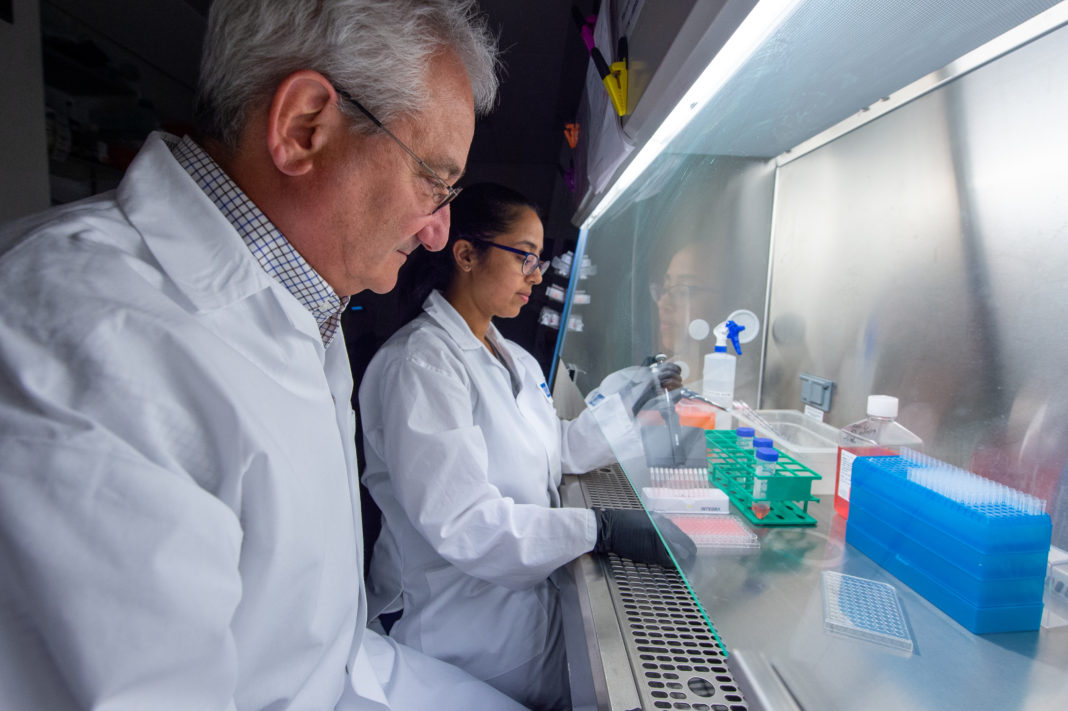
David Weiner, PhD, Director of the Wistar Institute’s Vaccine & Immunotherapy Center, oversees the work of research assistant professor Ami Patel, PhD, prior to COVID-19 pandemic. [The Wistar Institute]
Instead of making biomedicines in a factory, the molecules could be made in a patient’s body. Recently, David Weiner, PhD, executive VP of the Wistar Institute and director of Wistar’s Vaccine & Immunotherapy Center, and his colleagues reviewed this field—“the advances in the DNA and RNA monoclonal delivery,” as he described it.
In brief, the idea is that non-viral, synthetic DNA or messenger RNA would be injected into a patient. This process would deliver the information instructing patient cells to produce specific antibodies designed to treat a patient’s disease.
Although this is a bit futuristic for humans, the technology is advancing. As Weiner explains it: “The demonstration that these delivery methods can be developed for possible biologic production—as has been shown in animal systems—opens a new avenue for considering this new area for important products.”
More work lies ahead to move from bioprocessing factories to patients as medicine makers, but some key steps provide promise. “The fact that we now see published studies showing production in larger animals, including in non-human primates and in pig studies, and that the technologies have entered human trials represents important progress,” Weiner says.
The future could be even more exciting. As Weiner and his colleagues conclude: “While early, these highly disruptive nucleic-acid technologies have the potential to transform our approaches for the development of biologics, opening up new areas of opportunities using nucleics for disease treatments of global importance for patients and for animal health.”

